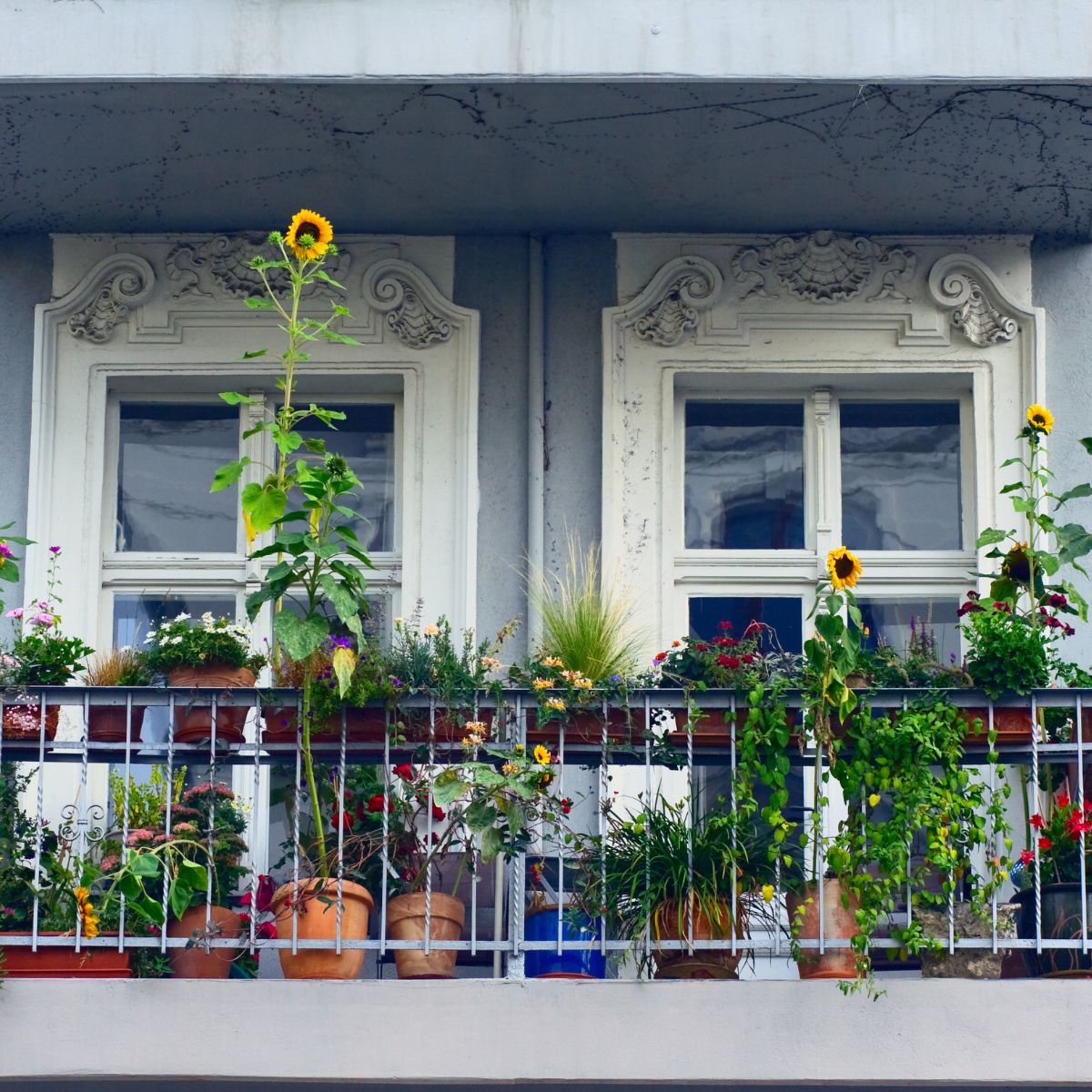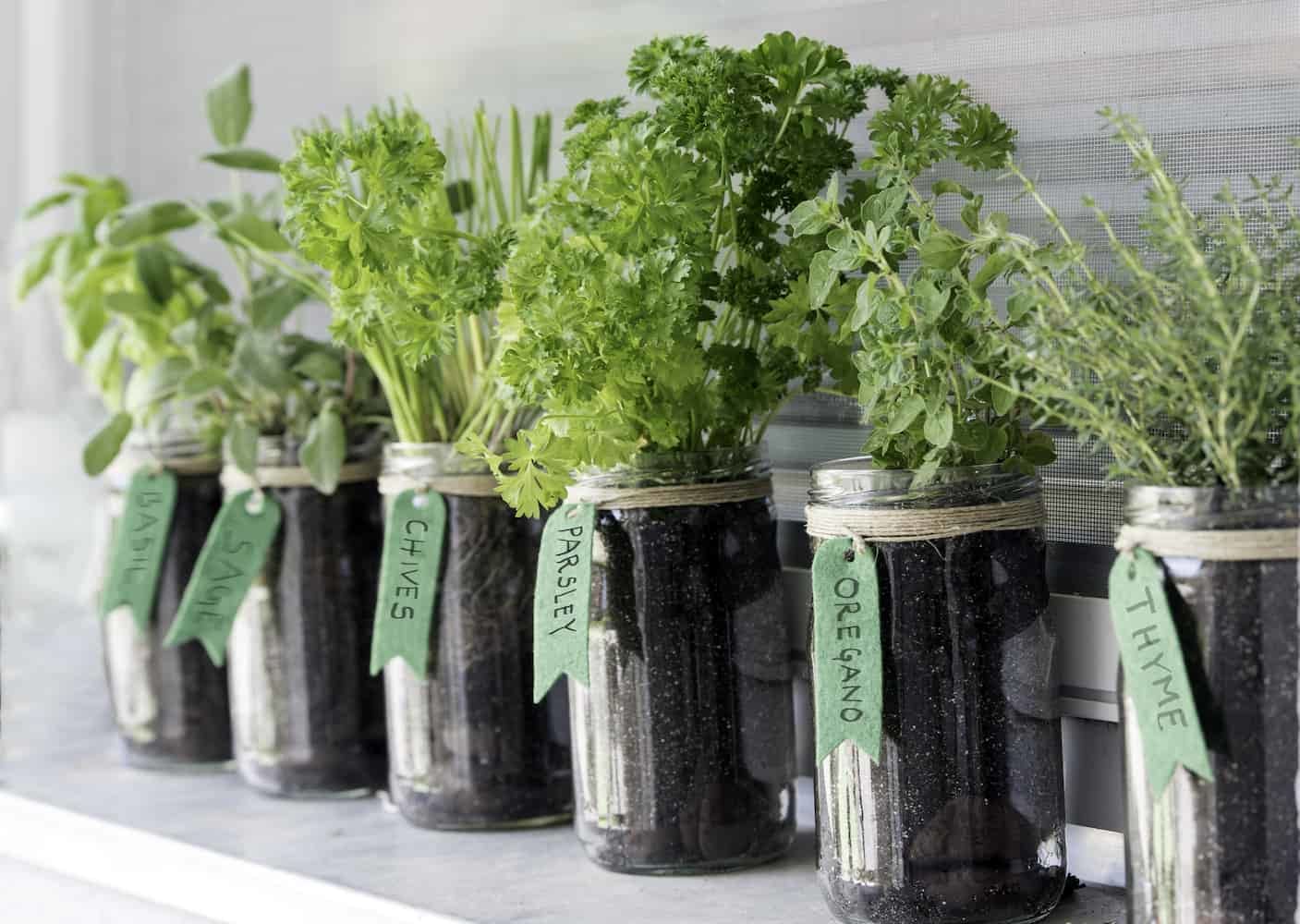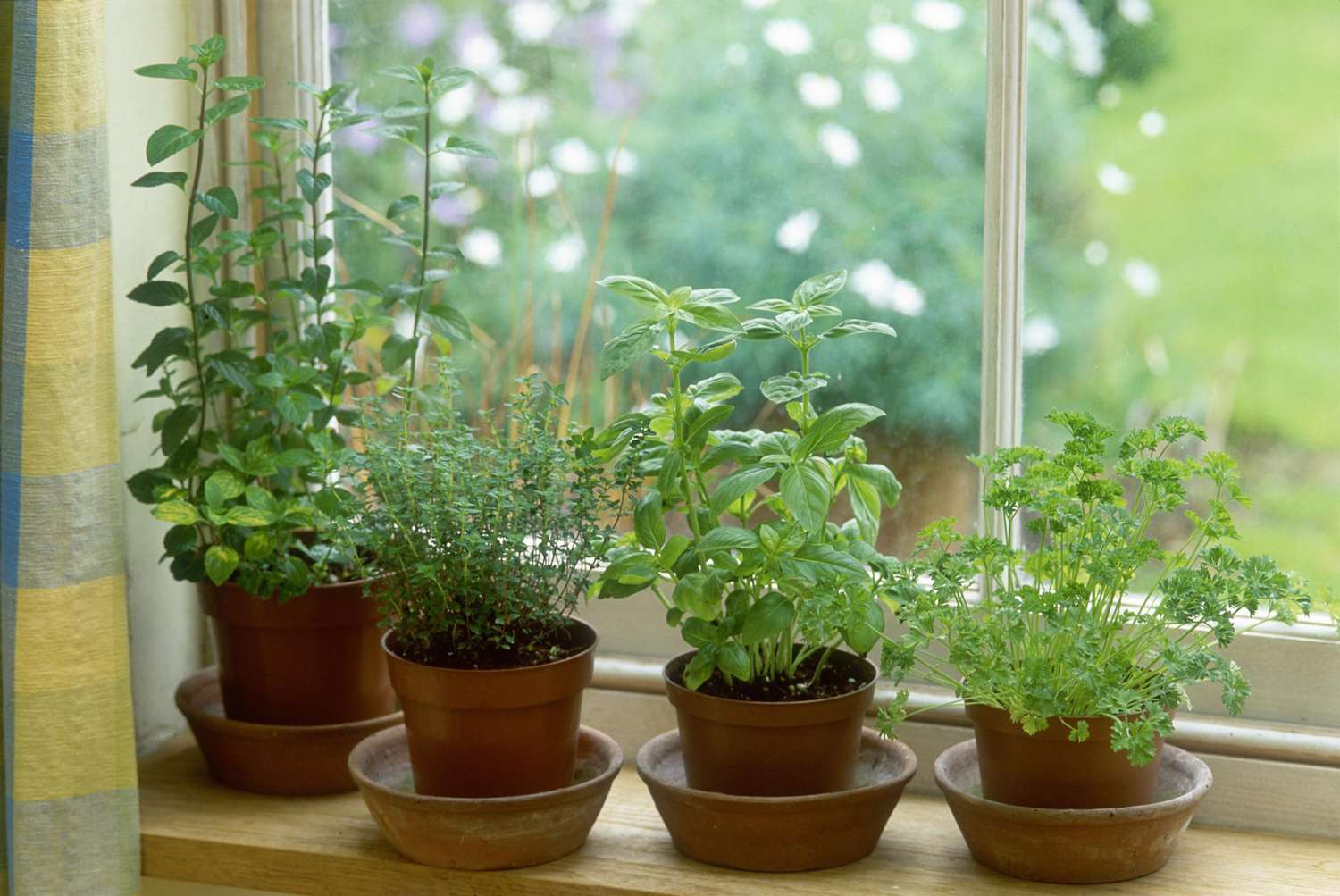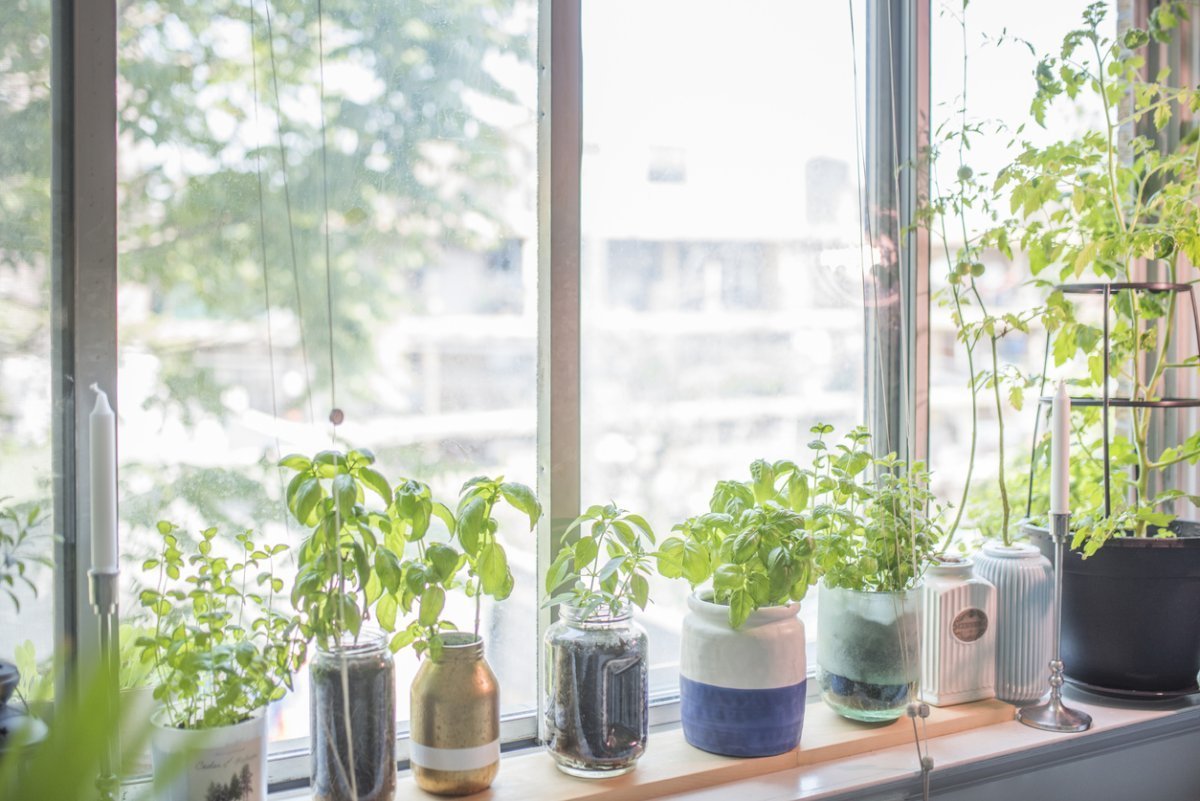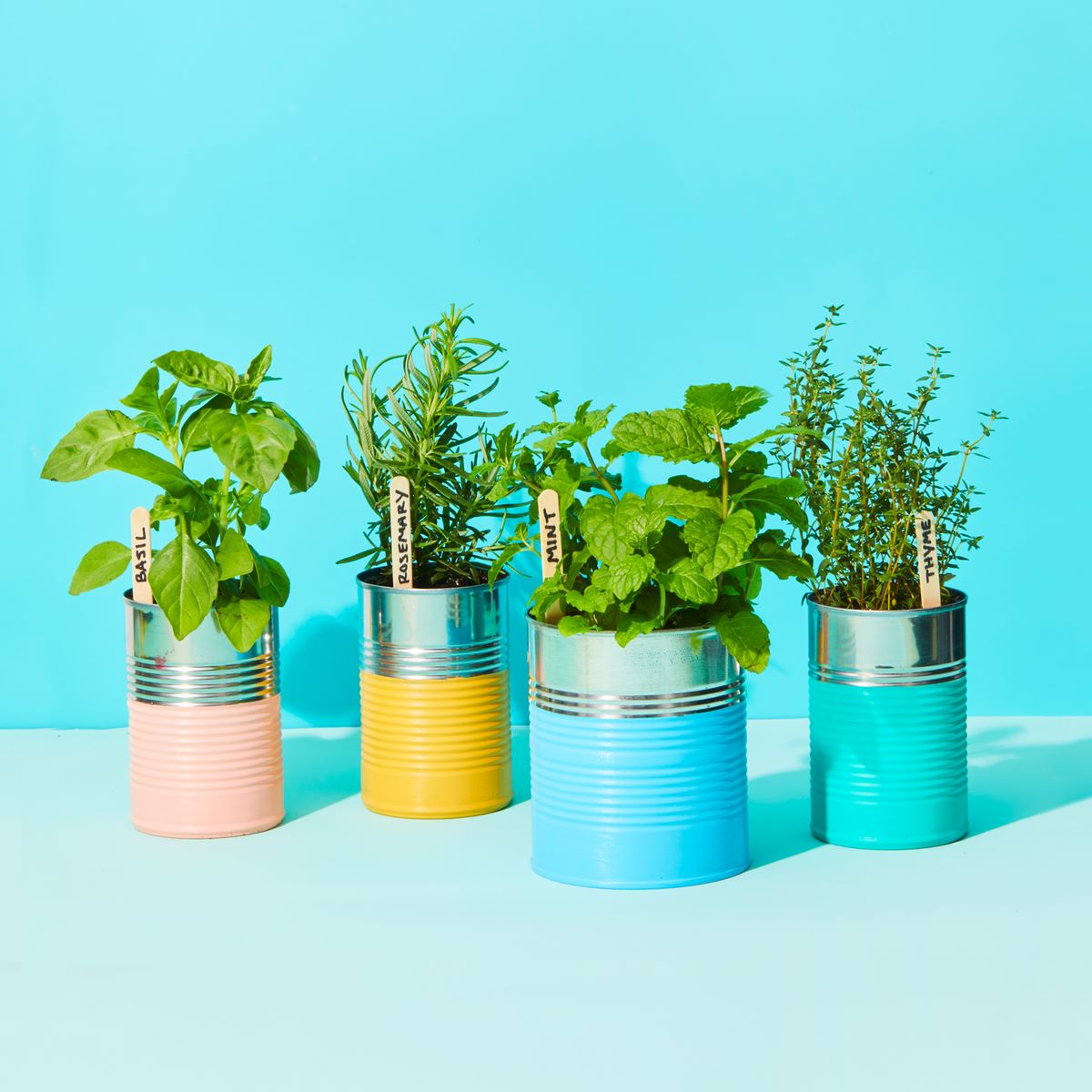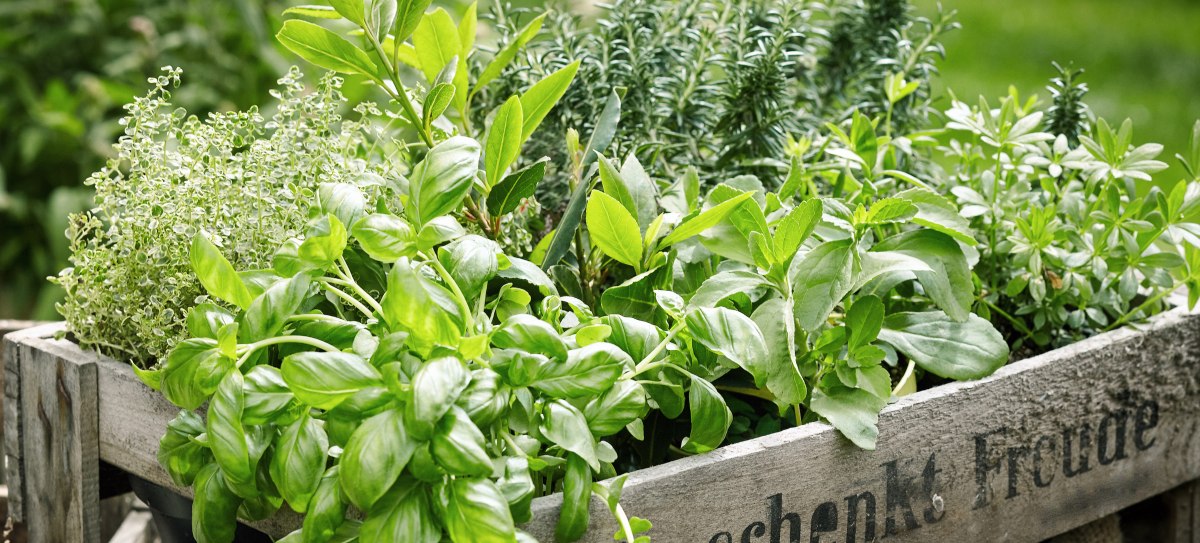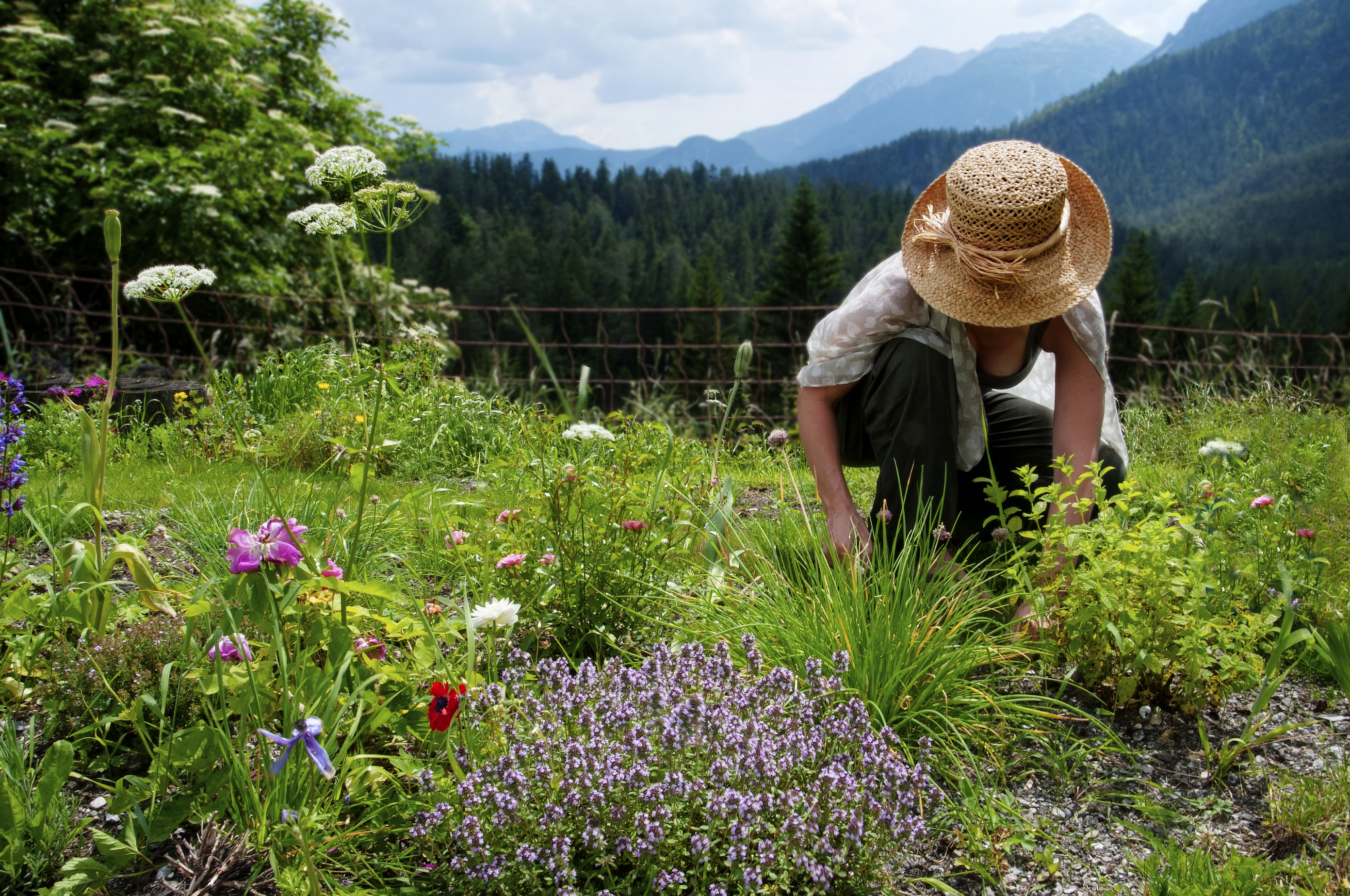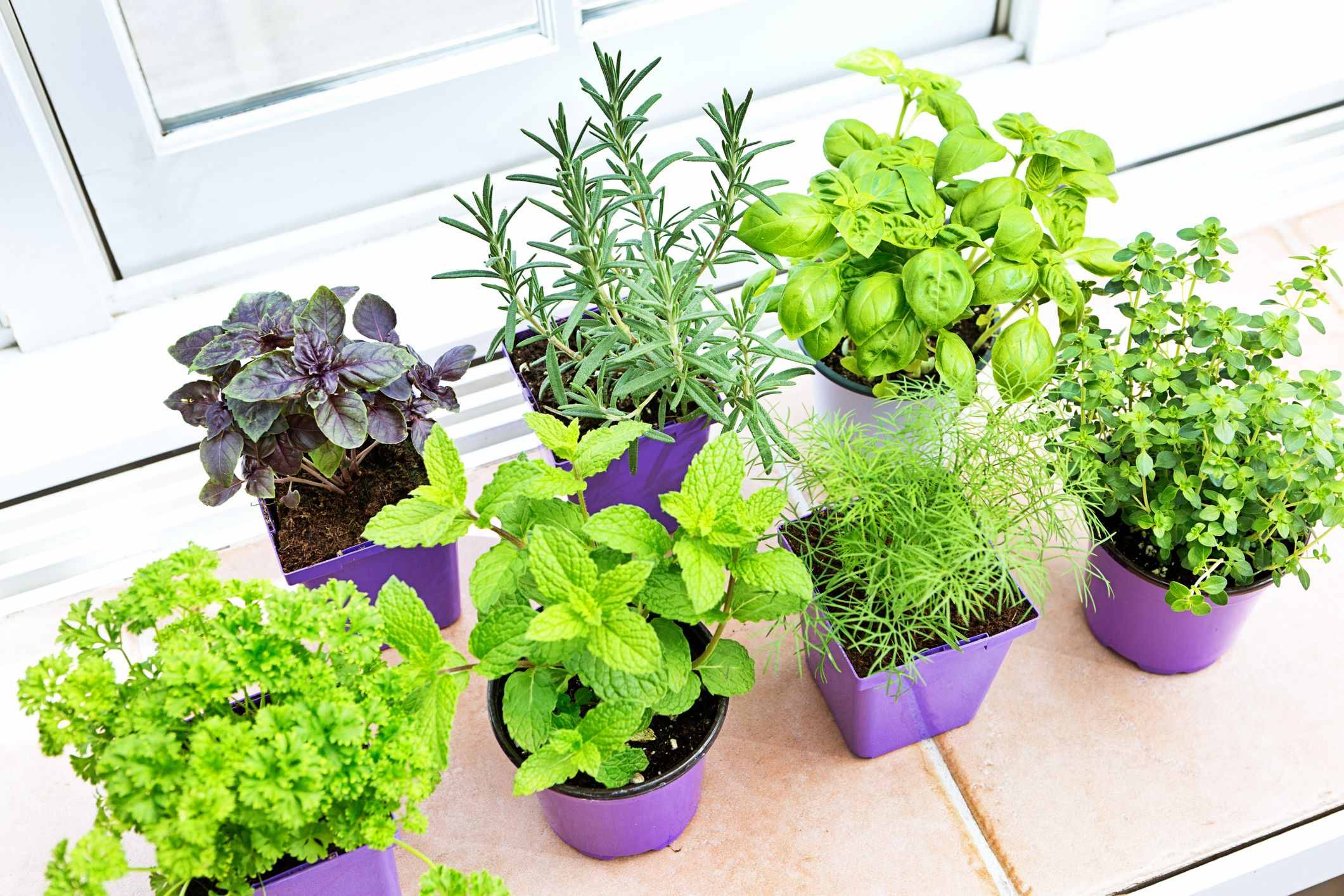Home>Types of Gardening>Edible Gardening>How To Choose The Right Size Pot For Growing Herbs


Edible Gardening
How To Choose The Right Size Pot For Growing Herbs
Modified: January 22, 2024
Discover the perfect pot size for your herbs with this comprehensive guide to edible gardening. Maximize your garden's potential with the right container.
(Many of the links in this article redirect to a specific reviewed product. Your purchase of these products through affiliate links helps to generate commission for Chicagolandgardening.com, at no extra cost. Learn more)
Table of Contents
Introduction
Welcome to the wonderful world of edible gardening! There’s something incredibly satisfying about growing your own herbs and being able to step outside your door to pluck fresh basil, mint, or rosemary for your culinary creations. Whether you have a spacious backyard, a small balcony, or even just a sunny windowsill, you can create your own herb garden and enjoy the benefits of homegrown flavorful herbs.
One crucial aspect of successful edible gardening is choosing the right pot for your herbs. The pot you select can greatly impact the growth, health, and overall productivity of your plants. In this article, we’ll explore the factors you should consider when choosing a pot for your herbs, ensuring that you provide them with the best environment to thrive in.
From the size of the pot to its material, drainage, and design, each element plays a significant role in the well-being of your herbs. By understanding these factors and making informed decisions, you can create an ideal growing space that caters to the specific needs of your herbs.
So, whether you’re a seasoned gardener looking to expand your collection of herbs or a beginner ready to embark on your edible gardening journey, let’s dive into the world of pot selection and discover how to choose the perfect home for your cherished herbs.
Factors to Consider When Choosing a Pot for Herbs
When it comes to choosing a pot for your herbs, there are several important factors to consider. These factors will not only impact the growth and health of your plants but also your overall gardening experience. Let’s take a closer look at each one:
- Pot Size: The size of the pot is crucial for the successful growth of your herbs. It’s important to choose a pot that is large enough to accommodate the root system of your herbs. Too small of a pot can restrict root growth and lead to stunted plants. On the other hand, a pot that is too large can retain excess moisture and cause root rot. Consider the mature size of your herbs and choose a pot that allows for adequate root expansion.
- Drainage: Proper drainage is vital for the health of your herbs. Pots with drainage holes allow excess water to escape, preventing waterlogged soil and root rot. If your chosen pot doesn’t have drainage holes, you can create them yourself using a drill. Additionally, using a saucer or tray under the pot can catch excess water, preventing it from sitting in the bottom of the pot.
- Material: The material of the pot can impact moisture retention and temperature regulation. Clay or terracotta pots are popular choices as they offer good breathability and prevent waterlogging. However, they may dry out more quickly, requiring more frequent watering. Plastic pots are lightweight and retain moisture better, but they may not have the same aesthetic appeal as clay pots.
- Shape and Design: Consider the shape and design of the pot based on your gardening space and the growth habit of your herbs. Taller pots can accommodate herbs with long root systems, while wider pots can house herbs that spread out horizontally. Additionally, consider the overall design of the pot to ensure it complements your gardening style and aesthetic preferences.
- Mobility: Depending on your gardening setup, mobility may be a factor to consider. If you plan to move your herbs around, choose pots with built-in handles or lightweight materials. This will make it easier to transport your herbs to different locations, ensuring they receive the right amount of sunlight and protection from adverse weather conditions.
By carefully considering these factors, you can select the perfect pot that will provide an optimal growing environment for your herbs. Remember, each herb has its own specific requirements, so adjust your choices accordingly to maximize their growth potential.
Pot Size
The size of the pot plays a crucial role in the development and productivity of your herbs. Choosing the right pot size is essential for providing adequate space for the root system to expand and ensuring optimal growth. Here are some key considerations when it comes to pot size:
Mature Size of the Herbs: Take into account the mature size of the herbs you plan to grow. Some herbs, like basil or thyme, have compact root systems and can thrive in smaller pots. Others, such as mint or lemongrass, have more vigorous growth and require larger pots to accommodate their spreading root systems. Research the specific needs of each herb to determine the appropriate pot size.
Adequate Room for Root Growth: When choosing a pot, make sure it provides enough room for the roots to spread comfortably. A pot that is too small can restrict the root growth, leading to stunted plants and poor nutrient uptake. As a general guideline, herbs like rosemary or sage need a pot that is at least 12-14 inches in diameter, while smaller herbs such as parsley or cilantro can do well in pots that are 8-10 inches in diameter.
Consider the Plant’s Growth Rate: Some herbs are fast growers and require more space for their vigorous growth. For instance, mint tends to be an aggressive spreader, so it’s best to provide it with a larger pot to prevent overcrowding and to ensure its growth doesn’t inhibit other herbs in a mixed planting. On the other hand, slow-growing herbs such as thyme or oregano may be content in smaller pots.
Multiple Herbs in One Pot: If you plan on planting multiple herbs in the same pot, take into account their individual space requirements. Allow enough room for each herb to grow without overcrowding. Keep in mind that different herbs have varying root systems, so consider the needs of each herb to determine an appropriate pot size.
Remember that larger pots will retain more moisture, so if you tend to overwater your herbs, it’s best to opt for slightly smaller pots. Additionally, consider the available space in your gardening area and select a pot that fits well and allows for proper air circulation around the plants.
By selecting the right pot size for your herbs, you provide them with the space they need to thrive and establish a robust root system. This, in turn, will contribute to healthier, more productive plants that yield an abundance of fresh flavors for your culinary endeavors.
Drainage
Proper drainage is a critical factor to consider when choosing a pot for your herbs. Good drainage ensures that excess water can escape from the pot, preventing the roots from sitting in continuously wet soil and potentially leading to root rot. Here are some key aspects to keep in mind regarding drainage:
Drainage Holes: When selecting a pot, look for one that has drainage holes in the bottom. These holes allow excess water to flow out, ensuring that the soil doesn’t become waterlogged. If a pot you love doesn’t have drainage holes, you can create them yourself using a drill or by carefully hammering a nail into the bottom of the pot. Just be sure to have a saucer or tray underneath the pot to catch the draining water.
Avoiding Waterlogged Soil: Without proper drainage, herbs can suffer from root rot due to waterlogged soil. This occurs when excessive water remains in the pot, suffocating the roots and depriving them of oxygen. The lack of oxygen can lead to root decay, limiting the plant’s ability to absorb nutrients and causing wilting or yellowing of the foliage. Ensuring good drainage prevents these issues and promotes healthy root development.
Soil Mix: Alongside drainage holes, a well-draining soil mix is essential for preventing water buildup in the pot. Use a high-quality potting mix specifically formulated for container gardening. These mixes often contain ingredients like perlite or vermiculite that improve drainage and aeration, allowing excess water to flow through more easily.
Pot Placement: Pay attention to where you place your herb pots to ensure proper drainage. Avoid placing them on surfaces that can trap water, such as saucers or trays that hold excess moisture. Instead, choose a location where any drainage water can flow freely away from the pots, preventing the accumulation of water around the roots.
Monitoring Watering: Regularly check the moisture level of the soil to prevent overwatering. Stick your finger about an inch into the soil, and if it feels dry, it’s time to water. If it’s still moist, hold off on watering until the top few inches of the soil have dried out. Consistent monitoring of the soil moisture will help you strike the right balance and prevent excessive watering that could lead to drainage problems.
By ensuring proper drainage in your herb pots, you create an environment that allows the roots to breathe and prevents water-related issues. This promotes healthier plants and reduces the risk of root rot, ensuring that your herbs can thrive and provide you with a bountiful harvest of aromatic and flavorful leaves.
Material
The material of the pot you choose for your herbs can have a significant impact on their growth and overall well-being. Different pot materials offer varying benefits and considerations. Let’s explore some common pot materials and their characteristics:
Clay/Terracotta: Clay or terracotta pots are a popular choice for herb gardening. These pots are porous, allowing for better airflow to the roots and promoting healthy root development. They also provide good insulation, protecting the roots from extreme temperature fluctuations. However, keep in mind that clay pots can dry out more quickly, requiring more frequent watering. They can also be heavier compared to other materials.
Plastic: Plastic pots are lightweight, durable, and readily available. They are a more affordable option compared to clay pots and offer excellent moisture retention. Plastic pots are less prone to drying out quickly, making them suitable for herbs that require consistently moist soil, such as parsley or mint. However, they may not provide as much breathability for the roots as clay pots, so proper watering and drainage become even more critical.
Wood: Wooden pots or containers can add a natural, rustic touch to your herb garden. They can be made from various types of wood, such as cedar or redwood, which are naturally resistant to rotting. However, wood pots require extra attention to prevent excessive moisture retention and decay. To enhance their longevity, line the interior of wooden pots with plastic or use a planter insert to prevent direct contact between the wood and the soil.
Ceramic/Stoneware: Ceramic or stoneware pots can be visually appealing, adding elegance to your herb garden. They come in a wide range of colors, styles, and textures. These pots tend to be heavier, which provides stability, but they can be more delicate and prone to breakage. When selecting ceramic or stoneware pots, ensure they have proper drainage holes and consider their weight if you plan on moving them frequently.
Fabric/Grow Bags: Fabric pots or grow bags offer excellent aeration and root development. These lightweight containers are made from breathable fabric, allowing air to reach the roots and preventing water from becoming stagnant. They also have the advantage of being space-saving, making them ideal for those with limited gardening areas. However, fabric pots may require more frequent watering due to their breathable nature.
Consider the specific needs of your herbs, as well as your personal preferences and gardening style, when selecting the material for your pots. Each material offers its own unique benefits and considerations. Remember to prioritize proper watering and drainage regardless of the pot material to create an ideal growing environment for your herbs.
Shape and Design
The shape and design of the pot you choose for your herbs can have both practical and aesthetic implications. While functionality is important, having a pot that matches your gardening style and complements your space can enhance the overall appeal of your herb garden. Here are some aspects to consider regarding pot shape and design:
Root Space: The shape of the pot should provide sufficient root space for the specific herb you are growing. Herbs with deeper root systems, such as rosemary or lavender, will benefit from taller pots that allow for adequate root growth. On the other hand, herbs with shallower roots, like basil or parsley, can thrive in wider pots. Understanding the growth habits of your herbs will guide you in selecting the appropriate pot shape.
Cohesive Arrangements: If you plan to grow multiple herbs in the same pot or create a herb garden arrangement, consider the compatibility of the pot shape with the herbs’ growth patterns. For example, using a rectangular or trough-shaped pot can accommodate several herbs in a row, creating an organized and visually pleasing display. Alternatively, mixing different pot shapes and sizes can add variety and interest to your herb garden.
Vertical Gardening: Vertical gardening is a space-saving and visually appealing technique for herb growing. Opting for pots with built-in vertical design elements, such as pockets or tiers, allows you to grow herbs vertically, making the most of your available space. Wall-mounted or hanging pots are also popular choices for vertical gardening and can add a unique aesthetic touch to your herb garden.
Color and Aesthetics: The color and overall design of the pot can contribute to the visual appeal of your herb garden. Consider the colors of your surrounding space, as well as the preferred color palette of your herbs, when selecting pot colors. Earthy tones like terracotta or neutral shades like black or white provide classic options, while vibrant colors can add a pop of personality. Additionally, pot designs with intricate patterns or textures can add a touch of artistry to your herb garden.
Practical Considerations: While aesthetics are important, don’t forget the practical aspects of pot design. Ensure that the pot has proper drainage holes to prevent waterlogging. If you anticipate the need for moving your pots frequently, consider pots with built-in handles or lightweight materials for easier mobility. Additionally, pots with saucers or trays can catch excess water and prevent surface damage.
Ultimately, the shape and design of the pot should reflect your personal style while also meeting the functional needs of your herbs. By carefully selecting the shape and design, you can create an herb garden that is both visually captivating and practical, providing a delightful and harmonious environment for your herbaceous companions.
Mobility
The mobility of your herb pots can be an important factor to consider, especially if you have limited space or if you need to move your herbs around to optimize their growing conditions. Here are some key aspects to keep in mind when it comes to pot mobility:
Built-in Handles: Pots with built-in handles make it easy to transport your herbs from one location to another. These handles provide a convenient grip, allowing you to move the pots without straining your hands or risking damage to the plants. Consider pots that have sturdy handles and are well-balanced to ensure stability while moving them.
Lightweight Materials: If you anticipate the need to move your pots frequently, consider opting for lightweight materials such as plastic or fabric. These materials are lighter in weight compared to clay or ceramic, making it easier for you to lift and relocate the pots as needed. However, be mindful that lightweight pots may be more prone to tipping, so ensure that they have a stable base and won’t be easily blown over by strong winds.
Casters or Wheels: For ultimate portability, look for pots with casters or wheels attached. These pots allow you to effortlessly move your herb garden wherever it’s needed. This feature is particularly useful if you have limited space or if you want to bring your herbs indoors during inclement weather or for easy access in the kitchen.
Adjustable Stands or Racks: Adjustable stands or racks provide a convenient solution for mobility while adding a touch of elegance to your herb garden. These stands typically have multiple tiers, allowing you to arrange your pots at different heights. This feature is especially useful if you have limited floor space and want to maximize vertical growing.
Consider Sunlight Exposure: Mobility can also come into play when moving your herbs to optimize their sunlight exposure. Some herbs may require more direct sunlight, while others prefer partial shade. By being able to move your pots, you can ensure that your herbs receive the right amount of sunlight throughout the day.
Growing Season Flexibility: Portable pots offer the advantage of flexibility during seasonal changes. They allow you to adjust the position of your herbs depending on the temperature, light, and weather conditions. For example, during colder months, you can move potted herbs indoors to provide them with warmth and protection.
Consider your specific needs and gardening setup when evaluating the mobility aspect of your herb pots. Whether it’s the convenience of built-in handles, the versatility of lightweight materials, or the flexibility of adjustable stands, incorporating pot mobility can enhance your herb gardening experience and ensure your herbs receive optimal growing conditions.
Conclusion
Choosing the right pot for your herbs is a crucial step in creating a successful and thriving herb garden. By considering factors such as pot size, drainage, material, shape and design, and mobility, you can provide an optimal environment for your herbs to flourish.
The pot size should allow adequate space for root growth, ensuring that your herbs can establish strong and healthy root systems. Proper drainage is vital to prevent waterlogged soil and root rot, so opt for pots with drainage holes or create them yourself if needed. The material of the pot, whether it’s clay, plastic, wood, ceramic, or fabric, should meet the specific needs of your herbs while catering to your personal preferences.
The shape and design of the pot not only contribute to the aesthetics of your herb garden but also play a role in the practicality of planting and arranging your herbs. Consider the growth habits of your herbs and choose pots that allow for optimal root space and cohesive arrangements. Pot mobility can be advantageous, especially if you have limited space or need to move your herbs to optimize sunlight exposure or seasonal changes.
Ultimately, the right pot for your herbs will provide a supportive and nourishing environment for their growth and productivity. Be sure to select pots that suit your gardening style and enhance the overall appeal of your herb garden. With the proper pots in place, you’ll be well on your way to enjoying the culinary delights and aromatic flavors that your homegrown herbs have to offer.

